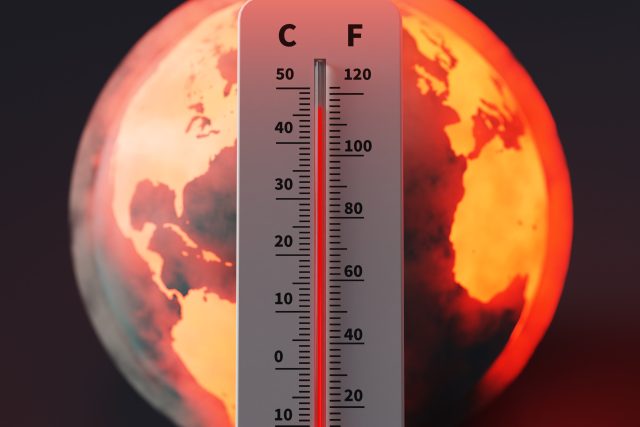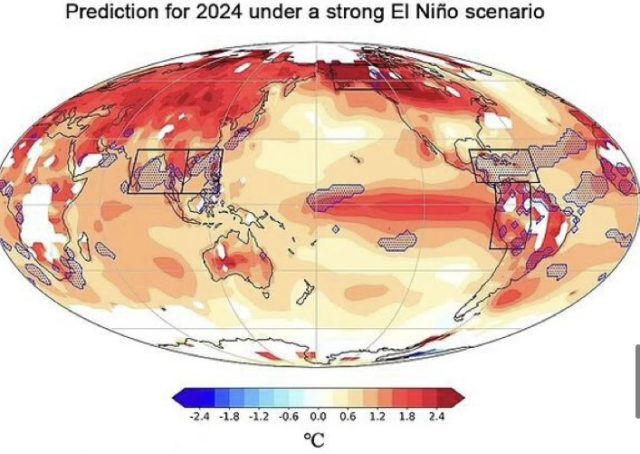This website uses cookies so that we can provide you with the best user experience possible. Cookie information is stored in your browser and performs functions such as recognising you when you return to our website and helping our team to understand which sections of the website you find most interesting and useful.
Record surface air temperatures to hit vineyards in 2024
A southern oscillation of El Niño has a 90% chance of setting record-breaking average surface air temperatures across the globe, bringing wildfires, cyclones and heatwaves to many winemaking regions this summer.

A new study by Chinese researchers reveals that a deviation of the weather phenomenon El Niño will bring exceptional heat to many parts of the world this summer.
Known as the ‘southern oscillation’, this transgression of El Niño is thought to occur every few years in the South Pacific and as per the recent study, published in the Scientific Reports journal, it has wide-reaching affects on the rest of the globe.
An El Niño is declared when sea temperatures in the tropical eastern Pacific rise to 0.5 °C above the long-term average.
Led by Dr Congwen Zhu of the Chinese Academy of Meteorological Sciences, the study analysed El Niño’s patterns between 1951 and 2023. From the results, researchers were able to predict that under a ‘moderate’ El Niño this year, the Bay of Bengal and the Philippines are likely to experience record-breaking mean surface area temperatures.
If, however, 2024 sees a ‘strong’ El Niño, then the Caribbean and South China Seas, as well as some areas of the Amazon and Alaska, are also predicted to face their hottest temperatures since records began.
As db has reported, China is already more susceptible to experience extreme heatwaves than Europe and the US.
According to a study by the World Weather Attribution (WWA) organisation, severe heatwaves can now be expected “approximately once every 15 years in North America, once every 10 years in southern Europe, and once every five years in China.”
The southern oscillation of El Niño this year may interrupt this pattern.
In the ‘moderate’ scenario, average global surface air temperatures are likely to climb 1.03°C – 1.10°C above the average temperature taken between 1951 and 1980. In the case of a ‘strong’ El Niño, the average global temperature is expected to rise between 1.06°C and 1.20°C this year.
Such high surface temperatures significantly increase the likelihood of climatic events such as wildfires, tropical cyclones and heatwaves in coastal areas due to the rising temperature of the water.

What does this mean for winegrowers?
According to the publication Proceedings of the National Academy of Sciences, consistently higher temperatures currently threaten up to 85% of the world’s winegrowing areas, with sunburned grapes and drought impacting harvests.
Regions such as Spain, which wrestled with scorching temperatures last year, have already been pushed to their limits in terms of managing the extreme heat. In September 2023 the Environment Minister for Spain announced that the government was ploughing €12 billion into tackling the devastating drought, which destroyed crops across 3.5 million hectares of land.
Italian winemakers battled similar conditions last year, with temperatures reaching 48°C in Sicily last July.
“Climate change is fast, unfortunately much faster than the agricultural traditions of many production areas,” Ivan Cappello, winemaking consultant for Uva Sapiens, working with a number of estates across Italy, told db.
Forecasters at the National Oceanic Atmospheric Administration (NOAA) have warned that the economic impact of the extreme weather experienced during 2023 alone could cost the global economy US$3 trillion over the next five years.

